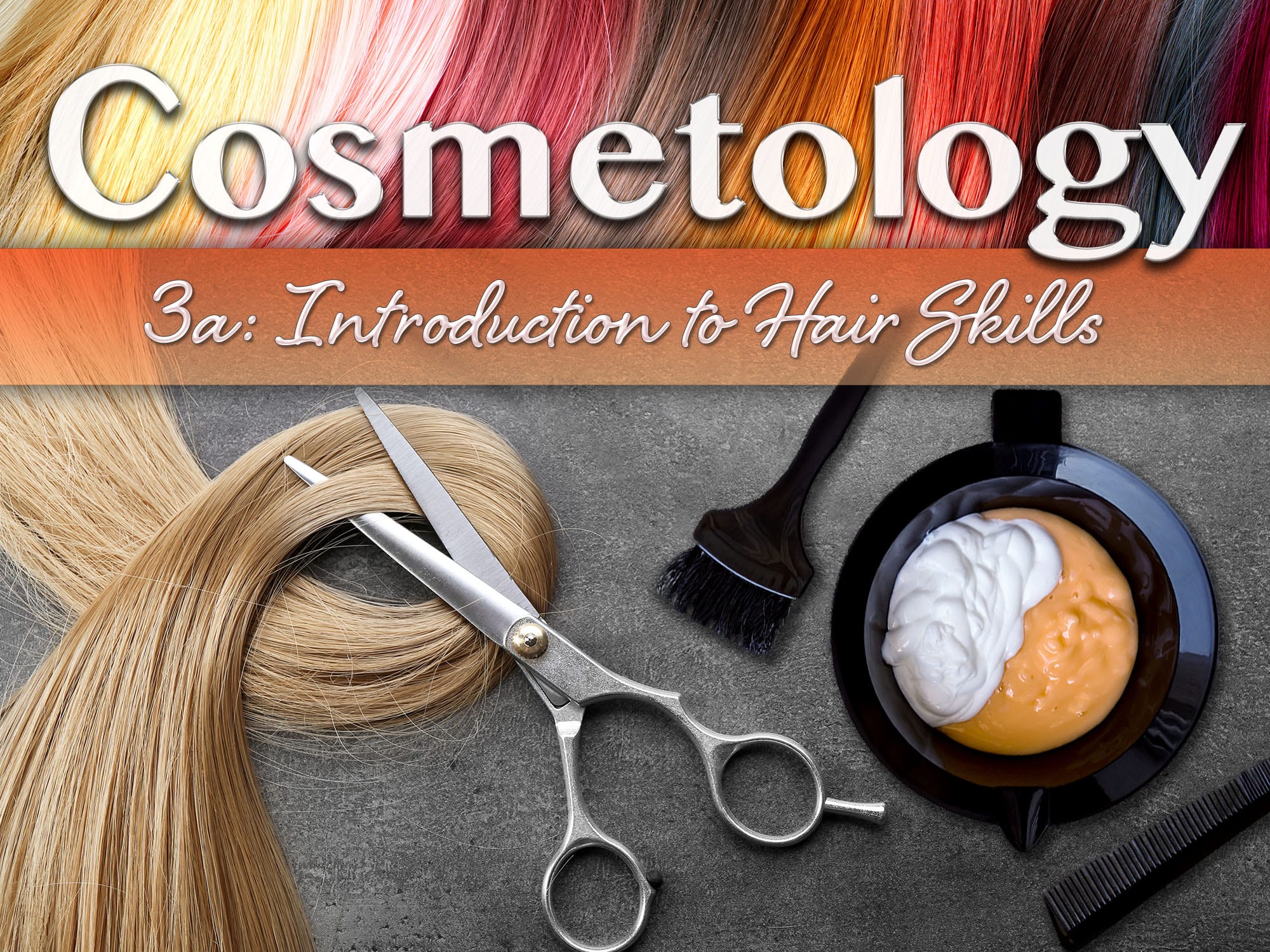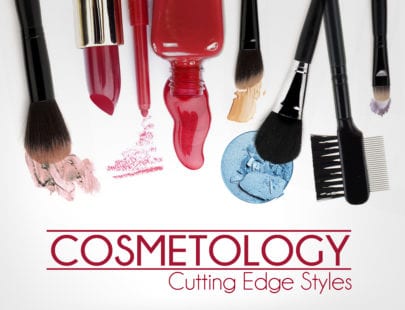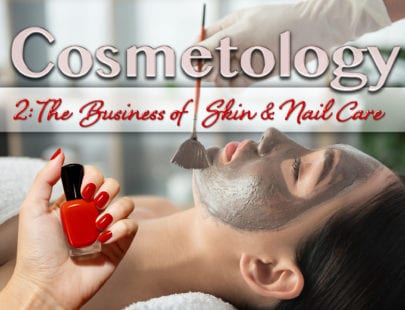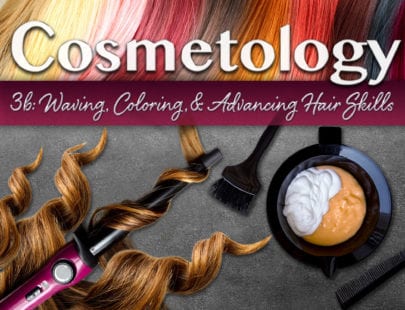
Cosmetology 3a: Introduction to Hair Skills
Cosmetology is a specialized field with a high skill set. Examine the complexities of cosmetology by learning to perform a hair, scalp, and skin analysis. You’ll learn about hair types, face shapes, and color theory. And, to effectively prepare you for a career in cosmetology, color techniques with an emphasis on salon and chemical safety is examined.
Units at a Glance
Unit 1: First Steps: Hair Care
Health is always the first priority for cosmetologists, so step one of working with a new hair client is checking to make sure that the hair and scalp are healthy. Hair, skin, and scalp analysis tell cosmetologists how the hair will tolerate services, and that’s critical information. Proper analysis of the hair’s porosity and elasticity will help to determine if chemical services such as colors, permanent waves, or other services can be performed. A little knowledge of anatomy tells cosmetologists exactly what they’re working with and how to best address any issues they see, even if that means recommending that a client seek medical care. But knowing how to talk to clients about their health is also an essential part of presenting yourself as a professional!
What will you learn in this unit?
- Describe hair growth, color, structure, and behavior
- Explain the functions of the skeletal, muscular, circulatory, and nervous systems
- Evaluate skin disorders to understand how to handle them in relation to your role in cosmetology
- Demonstrate professionalism and proper greeting techniques when meeting with a client
Unit 2: Scalp Matters: Shampooing, Conditioning, and Beyond
Did you know that there is a proper way to shampoo your hair? Getting it right improves the health of your scalp and ensures that the hair will be left in the optimum condition. Cosmetologists make daily decisions about the products that their clients use, so they need to know the right combination of shampoo and conditioner for their individual clients. Done properly, a good shampoo and scalp massage give a cosmetologist an opportunity to shine!
What will you learn in this unit?
- Assess the condition of the scalp
- Choose and apply the correct shampoo and conditioner
- Demonstrate draping techniques
- Explain the importance of good ergonomics in the salon
- Document client services and preferences
Unit 3: A Flair for Working with Hair
A cosmetologist needs to be a bit of an artist, and this begins with learning the basics of face shape and hair type, but they also should be a good listener. The client consultation is the first step in building the solid relationships that keep clients coming back. Having strong communication skills helps with everything from attracting new customers to the salon to making sure that any minor issues that come up are resolved immediately. With these skills in top form, a cosmetologist can ensure that all professional relationships are good ones!
What will you learn in this unit?
- Explain different hair types
- Analyze different face shapes
- Collaborate with clients to determine their needs
- Demonstrate effective communication skills
- Use the available technology in a salon setting
Unit 4: A Splash of Color
Hair coloring is one of the most common services cosmetologists perform, so get ready to learn about color! Getting it right requires understanding how colors interact with each other and the client’s hair. Every client’s hair is unique, and the right service depends on everything from the natural color to previous services. Fortunately, there are a lot of hair color options to suit every client’s needs. Then, it’s all about technique since there are many ways to apply color. No matter what method is used, handling the required chemicals safely benefits both the cosmetologist and the client.
What will you learn in this unit?
- Evaluate color theory as it relates to hair color
- Demonstrate coloring techniques
- Differentiate among hair coloring techniques
- Formulate hair coloring based on an evaluation of the client’s hair
- Identify appropriate health and safety procedures
Required Materials
-
- Computer with internet capabilities, word processing program, slideshow presentation program
- Camera or phone with video recording capabilities
- Two friends or family member volunteers
- Training mannequin head with hair
- Client chair
- Professional attire to wear in videos
- Cape for draping
- A sample release statement for client to sign
- Special effect hair coloring treatment
- Non-special effect hair color treatment
- Protective gloves
- Hairbrush
- Comb
- Various thermal tools (straightener, curling iron, etc.)
- Hair extensions or hair pieces
- Bobby pins and hair pins
- Hair clips for sectioning
- Hair-cutting shears
- Thinning shears
- Razor
- Clippers
- Disinfectant and cleaning solutions for tools
- Jar or other equipment for cleaning tools
- Barrier cream
- Shampoo and conditioner
- Sink for washing and rinsing hair
- Towels
- Rods and/or rollers
- Ingredients to create a shampoo or conditioning treatment (will vary by student)



